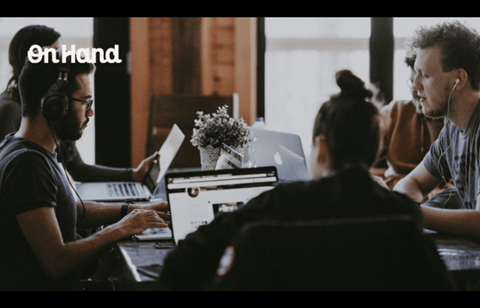
New research has put a spotlight on the growing crisis of workplace anxiety and absenteeism. According to MetLife UK, 30% of employees have (or would) call in sick despite feeling healthy, while half of British employees regularly experience anxiety at work, as reported by Corndel.
These findings reveal an urgent truth: employees are struggling, and businesses are feeling the impact. Stress, burnout, and declining engagement are driving absenteeism and damaging productivity. For HR leaders, the challenge isn’t just recognising the issue – it’s about taking meaningful action.
What’s Driving Workplace Anxiety and Absenteeism?
The causes of absenteeism are complex. While genuine illness accounts for a significant proportion, recent studies highlight that many employees are taking ‘sickies’ for reasons rooted in deeper workplace challenges:
● Burnout and Stress: 40% of employees feel burned out, with higher rates among women (47%) than men (31%).
● Work-Life Balance Struggles: 36% of employees report balancing personal and professional responsibilities as a cause of anxiety.
● Lack of Support: 26% cite insufficient resources to perform their jobs effectively as a key source of stress.
● Insufficient Wellbeing Benefits: Only 43% of employees reported receiving resilience training in the past year, and over half had no mental health training at all.
These figures make one thing clear: employees aren’t just skipping work for no reason. They’re taking time off because of unsustainable workloads, mental health challenges, and a lack of meaningful support in the workplace.
Why This Should be Top of HR’s Priority List
The cost of unchecked employee anxiety and absenteeism is significant. Beyond the immediate impact of lost productivity, businesses face:
● Higher Turnover: Employees experiencing high anxiety levels are more likely to disengage and ultimately leave.
● Declining Morale: A stressed workforce leads to lower team cohesion, weaker collaboration, and reduced innovation.
● Reputational Damage: Organisations that fail to address workplace anxiety risk losing out on top talent, especially younger employees who prioritise wellbeing in their job choices.
Beyond Free Coffee and Gym Discounts: What Employees Really Value
The traditional approach to workplace wellbeing, offering surface-level perks like resilience training or one-off wellness webinars, simply isn’t enough. Employees need meaningful, proactive support that fosters long-term wellbeing.
Some of the most effective strategies include:
- Embedding Purpose-Driven Benefits
The Oxford Wellbeing Research Centre found that workplace wellbeing interventions often fail – but volunteering is the exception. Empowering your employees to act on their values and give back provides a sense of purpose, strengthens connections, and improves overall job satisfaction. - Flexible Work and Time-Off Policies
MetLife’s research highlights that many employees take ‘sickies’ due to personal obligations, from childcare to medical appointments. Instead of forcing employees to feign illness, businesses should rethink flexibility, offering mental health days, flexible schedules, and realistic workload expectations. - Leadership Training That Actually Works
Corndel’s report found that 97% of HR leaders saw positive results from leadership training designed to support mental wellbeing. Managers should be equipped with the skills to recognise anxiety and stress in their teams, and be empowered to take action. - Building a Culture of Psychological Safety
Employees shouldn’t feel they have to lie about needing time off. Businesses that foster open conversations about mental health, stress, and workload create workplaces where employees feel supported, not scrutinised.
Turning Wellbeing Insights into Actionable Change
At OnHand, we understand that workplace wellbeing isn’t just about ticking a box, it’s about embedding purpose into the employee experience. By offering paid volunteering and purpose-driven benefits, businesses can:
● Reduce stress and burnout by giving employees meaningful ways to give back.
● Strengthen engagement and retention through purpose-driven initiatives.
● Improve workplace culture by fostering connections and a sense of fulfilment.
We make it easy for businesses to integrate high-impact volunteering into their benefits packages, helping employees, communities, and businesses.
The Next Chapter for Workplace Wellbeing: Action Over Optics
The latest research is clear: anxiety and absenteeism are symptoms of deeper workplace challenges. Businesses that address these issues proactively – by embedding purpose-driven benefits, rethinking flexibility, and investing in meaningful mental health support – will not only create healthier workplaces but also gain a competitive edge in attracting and retaining top talent.
Ready to give your people a sense of purpose? Book a demo and see how OnHand could empower your employees.




